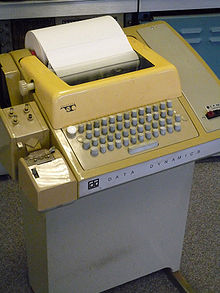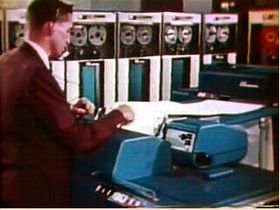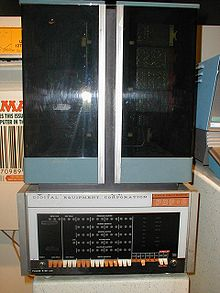#jiscopenbib
Very simply:
Scholarship (Research, innovation, planning, university business, etc.) is being crippled by the lack of Open Bibliography
That’s a strong statement. (And bibliography is not the only area where lack of Openness is crippling). But I’ll defend it and say what JISC, The Open Knowledge Foundation and others are doing about it. First some examples:
- A Vice-chancellor (University president, …) wants to know who in her university is collaborating effectively with the BRIC countries. (Any VC who doesn’t want to know this shouldn’t be in the job). How do they find this out? They send a mail to all academics – get some sporadic replies. What they can and should be doing is analysing the co-authors of all university publications to see where the co-authors are located. Simple… Except that if they try to read the metadata automatically (which is technically possible), they run into copyright FUD.
- A researcher wants to find out what papers contain crystal structures of natural products. This can be obtained from the gratis cis-paywall (the freely visible part of a scientific publication) of all publishers. He can extract this from OA-Libre publications but not necessarily from OA-gratis or Toll-access. But can they do this automatically without being sued? Copyright FUD again
- Has there been an increase in the number of papers published jointly by neuroscientists and molecular biologists? Which groups have the most effective collaborations? This would be easy to do if electronic serial bibliography Again, you cannot do this is a modern manner because of copyright FUD.
What is copyright FUD? It’s the uncertainty as to whether you are allowed to do something without possibly violating copyright (or some other contractual obligation signed behind closed doors and restricted by non-disclosure – many academics don’t even know what they aren’t allowed to do within their own institution). If you ask someone in the library you’ll get the normal sort of pseudo-syllogism:
“We’re not sure whether you are allowed to do this. There is a risk that if you do this the publishers will object/sue us/cut us off/. No risk is worth taking. Therefore you can’t do this.”
The same FUD applies to library catalogues. If they are obtained from other sources they may be contaminated with copyright FUD. After all collections of data may carry IP rights in some jurisdictions (such as Europe).
So the way forward is to embrace Open Bibliography (as itself, and also more widely as Open Scholarship). We believe that all primary publishers will actually see this as an important advance. After all if the bibliography is Open, then more people are likely to access the paper, journal, thesis, monograph, report, grey literature, etc.
The Open Knowledge Foundation has been running an Open Bibliography project for nearly a year (see http://lists.okfn.org/mailman/listinfo/open-bibliography – which anyone can join and contribute). As a result we’ve (Adrian Pohl) been linking efforts from round the world – such as Jim Pitman’s Bibliography Knowledge Network (BKN), and other luminaries such as Thomas Krichel, Karen Coyle, David Shotton. They are joined by OKF – Jonathan Gray, Rufus Pollock, Ben O’Steen , Jo Walsh, … and myself. For example Jonathan and colleagues have just returned from running an Open Bibloliography workshop in Berlin.
This has been enhanced by JISC funding of the #jiscopenbib project (PeterMR, Dave Flanders (JISC)) which has been going about 3 months (Rufus, Ben and Mark McGillivray (E-burgh)). [There’s a complementary project #jiscopencite, with David Shotton, for citations]. We’ve accomplished a great deal, not the least of which is that there is clearly a massive pent-up requirement (not always recognised) for Open bibliography – expressed very well by Paul Miller that bibliography should be Open. We’ve talked with many publishers, many libraries and other producers of bibliography. Ben has made great progress in tying together the various approaches that publishers use for exposing their metadata. Each publisher does it differently, using a sort of microtagging based on PRISM, Dublin Core, NLMDTD and homegrown. Ben’s approach unifies this and allows it to searchable through an RDF triplestore.
As I’m part of UKPMC (the UK branch of PubMed Central) I’m keen to re-use the bibliography from that. We can (obviously) use the Open Access subset which is about 1 million records. But we can’t use the whole PMC (20 million). Why not? Copyright FUD. 20 million records that scholars should be using and aren’t. 20 million articles that aren’t being accessed as much as they should because their bibliography is only available through closed sources. (And although some publishers sell their bibliographies to secondary publishers, surely it won’t harm this business to provide the Bibliography in an Open form as well – look at the success of many recent Openings of content from Cory Doctorow to Dave Mackay to Ordnance Survey.)
There’s lots of recent news – read the discussion list and the OKFN blog. I’ll be reporting more as I have time (currently refactoring OSCAR3=>OSCAR4, running Quixote, …).
The message is simple:
We’re creating a set of Open Bibliography principles (like the Panton Principles for Scientific Data). We don’t think these are controversial. For scientific bibliography they can be summarised as:
Bibliographic records (names, titles, ISSNs, pages, addresses – all cis-paywall) should be fully Open:
Free to use, re-use and redistribute without further permission.
Who could sensibly object to that? It’s not a creative work – it’s part of our scholarly infrastructure. The digital plumbing. There are some details such as community norms – best endeavour to ensure fidelity of reproduction, for example.
So we are appealing to creators of bibliographic records (catalogue entries, article metadata, thesis splash pages, …)
Please support us in this endeavour. We can do the techie stuff – all we need is permission (hopefully enthusiastic) to use your records and transform them to an Open Semantic format.
 [thanks to wikimedia]
[thanks to wikimedia] 
 [from Wikimedia]
[from Wikimedia] 
 [thx Wikimedia]
[thx Wikimedia]



